Vimanas Of The Rama Empire: Flying Machines Dominated Ancient Skies In Distant Past
A. Sutherland - AncientPages.com - Sanskrit texts are filled with references to gods and battles they fought in the sky, using powerful Vimanas equipped with the most sophisticated deadly weapons.
Once upon a time, there were present (permanently or temporarily) several races on Earth. Some of them fought for dominance over our planet.
The Indian yogi Swami Vivekananda and Nikola Tesla
Stories of these encounters were continuously transmitted orally from one generation to another until they were finally written down through the centuries.
Today we can read about them in sacred epics such as "Ramayana", "Mahabharata", "Bhagavata Purana" and others.
At the end of the 19th century, the Indian yogi Swami Vivekananda was the first to demonstrate Vedic religion and philosophy in the United States and Europe. He had met with great scientific minds such as Edison, Lord Kelvin, and brilliant scientist Nikola Tesla. Tesla was deeply inspired by Vivekananda's concepts and the knowledge he obtained from Indian Vedas.
He was also fascinated with Vedic cosmology and its concepts and understood that they perfectly complemented already existing western theories.
However, Tesla failed to "show the identity of energy and matter… The mathematical proof of the principle did come until about ten years later when Albert Einstein published his paper on relativity. What had been known in the East for the last 5,000 years was then known to the West…" (Tesla Memorial Society of New York).
Vedic texts say that the "aerial car" - we know as Vimana - could move like a UFO, in any way the pilot wanted - up, down, forward, or backward. It was shaped like a sphere and borne along at great speed on a powerful wind generated by mercury that apparently played an important role in propelling the 'heavenly chariots" frequently described in ancient Sanskrit texts.
In his book "The Anti-Gravity Handbook" David H. Childress mentions yet another Indian source, the Samar and says that "Vimanas were "iron machines, well-knit, and smooth, with a charge of mercury that shot out of the back in the form of a roaring flame".
It is "possible that mercury did have something to do with the guidance system and the propulsion system of the Vimanas? Could the Soviet discovery of "age-old instruments used in navigating cosmic vehicles" in distant caves of Turkestan and the Gobi Desert, prove the significance of mercury in the Vimana'systems?
These mysterious instruments were described as hemispherical objects of glass or porcelain, ending in a cone with a drop of mercury inside.
Rediscovered in a temple in India in 1875, the "Vaimanika Sastra" (a 4th century BC) is Sanskrit text on aerospace technology.
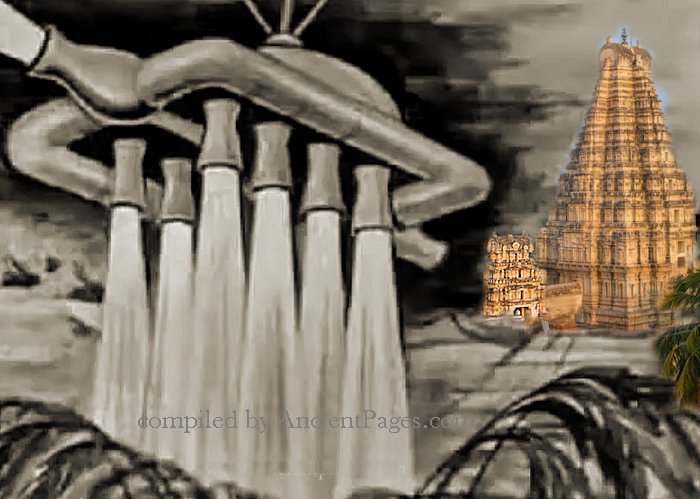
Bharadwaja the Wise compiled information about the Vimanas from at least eighty earlier texts and Vedic epics for his book "Vaimanika Sastra". Scholars who found the work in 1918 in the Barbuda Royal Sanskrit Library north of Bombay, India, have verified the authenticity of Bharadwaja's work as well as the manuscripts he consulted when he assembled it.
The work includes detailed descriptions of flying vehicles for civil aviation and warfare, two- and three-decker planes, cargo-carrying aircraft, and passenger planes used for the transportation of 400 to 500 people.
It also includes construction details (31 essential parts of these vehicles and 16 materials from which they are constructed, which absorb light and heat, instructions for pilots, accurate dimensions, and descriptions of what type of metal and other materials would be most suitable for construction of aircraft, including apparatuses that could neither catch on fire nor break.
Bharadwaja the Wise refers to no less than 70 authorities and 10 experts of air travel in antiquity; unfortunately, these sources are today lost.
It is highly doubtful that any poet, even the most brilliant one, could create this kind of "high-tech fairytales" with precise descriptions of powerful weapons and advanced vehicles.
On the other hand, it is likely that the later writers on Vimanas, wrote as observers and from much earlier texts, and were understandably confused on the principle of their propulsion or other technical details.
Powerful Vimanas, both gigantic and smaller ones designed for just one passenger, are described in these texts. Next to them, there are descriptions of "flying cities", moving in space and almost self-sufficient. These "cities" - gigantic objects rotating around their own axis - were spacious and richly decorated. Such cosmic cities had special gates for arriving craft and were constantly orbiting Earth.
Also, the "Samaranganasutradhara" describes how the vehicles were constructed. The work, which gives us insights into the ancient Indian technological knowledge, has one of its eighty-three long chapters, devoted to various mechanical devices and explains the construction of bird-shaped aerial cars; it also has some verses dealing with the robots meant to act as guards.
Written by – A. Sutherland AncientPages.com Staff Writer
Copyright © AncientPages.com All rights reserved. This material may not be published, broadcast, rewritten or redistributed in whole or part without the express written permission of AncientPages.com
Expand for referencesChildress, David H. The Anti-Gravity Handbook
Tesla Memorial Society of New York
S. Andrews, Lemuria and Atlantis
Childress, David H. Technology of the Gods
More From Ancient Pages
-
 Lost Maya City Hidden In The Volcanic Lake Atitlán Explored By Underwater Archaeologists
Archaeology | May 4, 2022
Lost Maya City Hidden In The Volcanic Lake Atitlán Explored By Underwater Archaeologists
Archaeology | May 4, 2022 -
 Curious Ancient Prairie Mystery In Washington Scientists Cannot Solve – Maybe You Have An Idea What Happened?
Featured Stories | Nov 10, 2024
Curious Ancient Prairie Mystery In Washington Scientists Cannot Solve – Maybe You Have An Idea What Happened?
Featured Stories | Nov 10, 2024 -
 Great Living Chola Temples: Outstanding Workmanship Of Chola Dynasty Builders Of South India
Civilizations | May 31, 2024
Great Living Chola Temples: Outstanding Workmanship Of Chola Dynasty Builders Of South India
Civilizations | May 31, 2024 -
 Secret Underground Ancient Teotihuacan Tunnel May Solve A Long-Standing Mystery And Reveal Royal Tombs
Civilizations | Jul 8, 2016
Secret Underground Ancient Teotihuacan Tunnel May Solve A Long-Standing Mystery And Reveal Royal Tombs
Civilizations | Jul 8, 2016 -
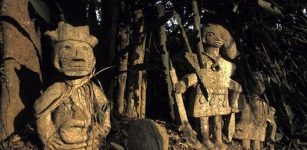 Mystery Of Sacred Groves Of Oshogbo And Its Remarkable Ancient Figures
Featured Stories | Nov 25, 2023
Mystery Of Sacred Groves Of Oshogbo And Its Remarkable Ancient Figures
Featured Stories | Nov 25, 2023 -
 1,000-Year-Old Bone Skate Found In Moravian City Of Přerov, Czech Republic
Archaeology | Mar 20, 2024
1,000-Year-Old Bone Skate Found In Moravian City Of Přerov, Czech Republic
Archaeology | Mar 20, 2024 -
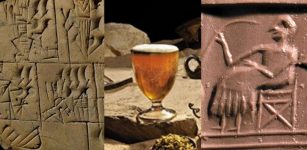 Ninkasi – Sumerian Goddess Of Beer And Alcohol – The Hymn To Ninkasi Is An Ancient Recipe For Brewing Beer
Featured Stories | Feb 27, 2019
Ninkasi – Sumerian Goddess Of Beer And Alcohol – The Hymn To Ninkasi Is An Ancient Recipe For Brewing Beer
Featured Stories | Feb 27, 2019 -
 Anansi The Spider: Trickster And Spirit Of Knowledge In African Mythology
African Mythology | Jul 20, 2016
Anansi The Spider: Trickster And Spirit Of Knowledge In African Mythology
African Mythology | Jul 20, 2016 -
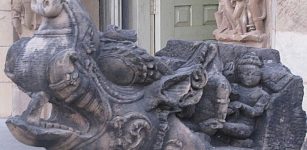 Makara – Legendary Sea-Creature With Many Incarnations In Hindu Mythology
Ancient Symbols | Feb 2, 2020
Makara – Legendary Sea-Creature With Many Incarnations In Hindu Mythology
Ancient Symbols | Feb 2, 2020 -
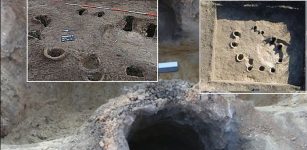 Celts In Poland: Iron Smelting Furnaces Used By Celts 2,400 Years Ago – Unearthed
Archaeology | Nov 30, 2019
Celts In Poland: Iron Smelting Furnaces Used By Celts 2,400 Years Ago – Unearthed
Archaeology | Nov 30, 2019 -
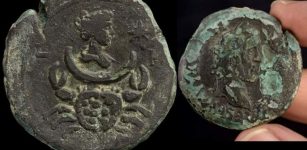 1,850-Year-Old Rare Bronze Coin, Depicting Roman Moon Goddess Luna – Unearthed
Archaeology | Aug 3, 2022
1,850-Year-Old Rare Bronze Coin, Depicting Roman Moon Goddess Luna – Unearthed
Archaeology | Aug 3, 2022 -
 Stone Tools Reflect Three Waves Of Migration Of The Earliest Homo Sapiens Into Europe
Archaeology | May 4, 2023
Stone Tools Reflect Three Waves Of Migration Of The Earliest Homo Sapiens Into Europe
Archaeology | May 4, 2023 -
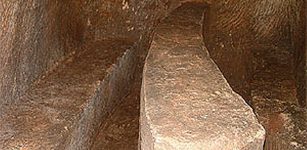 Mystery Of Gilmerton Cove: Underground Maze Of Caves, Passages And Tunnels
Featured Stories | Dec 22, 2015
Mystery Of Gilmerton Cove: Underground Maze Of Caves, Passages And Tunnels
Featured Stories | Dec 22, 2015 -
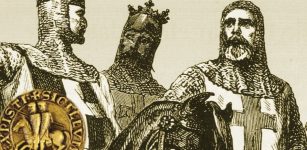 Knights Templar – Among The Most Wealthy And Powerful Of The Western Christian Military Orders
Featured Stories | Jun 11, 2020
Knights Templar – Among The Most Wealthy And Powerful Of The Western Christian Military Orders
Featured Stories | Jun 11, 2020 -
 The Invisible Plant Technology Of The Prehistoric Philippines
Archaeology | Jul 1, 2023
The Invisible Plant Technology Of The Prehistoric Philippines
Archaeology | Jul 1, 2023 -
 Neanderthal Extinction May Have Been Caused By Sex, Not Fighting – New Study Suggests
Archaeology | Nov 1, 2022
Neanderthal Extinction May Have Been Caused By Sex, Not Fighting – New Study Suggests
Archaeology | Nov 1, 2022 -
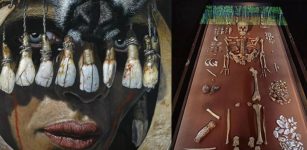 DNA Study Sheds New Light On The Mysterious 9,000-Year-Old Shaman Burial In Bad Dürrenberg
Archaeology | Nov 29, 2023
DNA Study Sheds New Light On The Mysterious 9,000-Year-Old Shaman Burial In Bad Dürrenberg
Archaeology | Nov 29, 2023 -
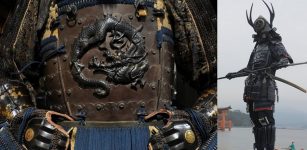 Ancient History Of The Samurai Armor
Featured Stories | Aug 27, 2018
Ancient History Of The Samurai Armor
Featured Stories | Aug 27, 2018 -
 Sinister Manchac Swamp And The Chilling Curse Of Julia Brown
Featured Stories | Aug 25, 2021
Sinister Manchac Swamp And The Chilling Curse Of Julia Brown
Featured Stories | Aug 25, 2021 -
 Tiny Tools And Skills Of Mysterious Toaleans People In Southernmost Sulawesi, Indonesia
Archaeology | May 27, 2021
Tiny Tools And Skills Of Mysterious Toaleans People In Southernmost Sulawesi, Indonesia
Archaeology | May 27, 2021


